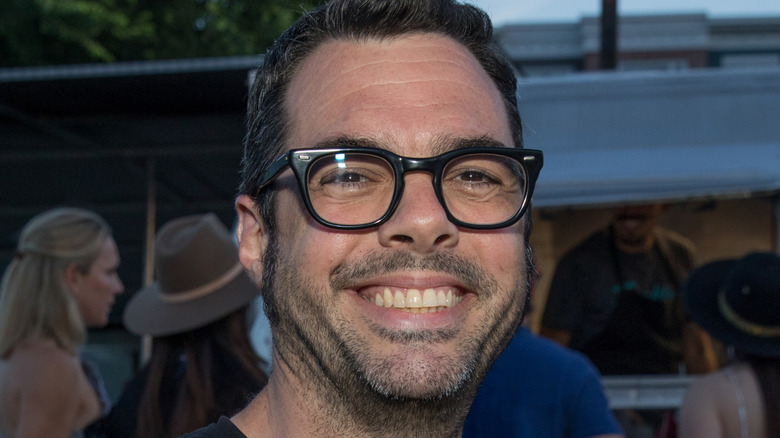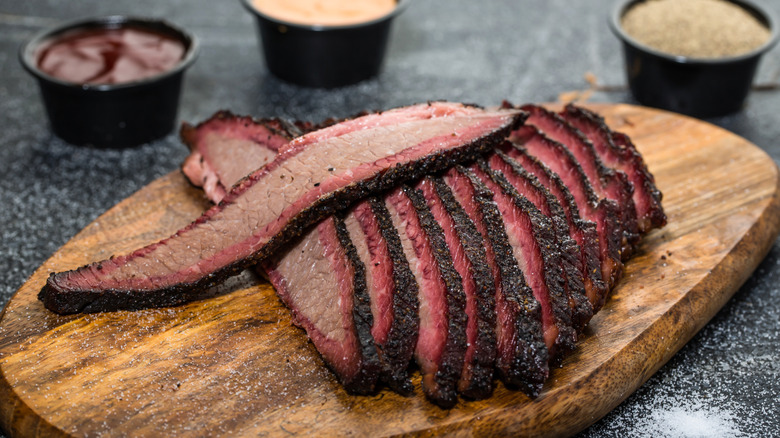How To Choose A Cut Of Brisket Aaron Franklin Would Approve Of Every Time
Summertime barbecues are a high-steaks affair (get it?), and brisket is the crown jewel of any serious smoker's repertoire. This cut, taken from the breast or lower chest of the cow, is rich, deeply flavorful, and melt-in-your-mouth tender when done right. Before you even think about firing up the smoker (warning: quality cuts of brisket are wasted on the grill), choosing the correct cut is everything.
If you're unsure where to start, you're in luck: barbecue maestro and New York Times bestselling author Aaron Franklin is here to help. The James Beard Award–winning pitmaster, whose Austin-based restaurant has earned celeb status among barbecue fans, shared his brisket-buying knowledge in a Facebook video that's quickly become essential viewing for aspiring pitmasters.
First things first: Don't fall for the myth that one side of the brisket (left or right) is more tender than the other. Franklin calls that "total hogwash." Instead, he advises shoppers to focus on texture. A high-quality brisket should feel floppy and flexible in your hands, as the floppiness is a sign that the brisket has a nice meat-to-fat ratio. The logic behind this is that more flex means the meat's less likely to have been injected with a bunch of chemicals, so it's likely to have a better texture that will make a delicious dinner. Then, flip it over for another telltale marker of quality: Fine lines of fat running through the bottom of the meat. This type of marbling is your best bet for flavor, moisture retention, and a beautifully tender chew.
Other tips for picking the perfect cut of brisket
Other professionals have shared their top pointers for selecting the best brisket at the store. Derek Piva, executive chef of The Restaurant at Tu Tu' Tun Lodge in Oregon, offered a few more brisket-picking tips exclusively to Chowhound. You should go for a packer cut brisket, which is less trimmed and has more fat, meaning more flavor, according to the chef. Piva also suggests looking for a brisket with an even thickness across the flat for more consistent cooking. Make sure to choose a brisket that's reddish-pink all over. It's also really a case of the bigger the better — as larger briskets have a higher fat content.
Whatever cut you go for, make sure you smoke the brisket for at least 30 minutes per pound to draw out flavors and develop that signature rich taste. This low-and-slow method allows all that marbled fat to render down and infuse the meat with deep, smoky goodness. Whether you're a backyard barbecue king or a wannabe pitmaster, start with a brisket that's built to stand out and approved by barbecue great Aaron Franklin, and then let the smoke work its magic to perfection.

